Can you tell us a bit about yourself and your background in the industry?
I started out making little shorts on my parents’ massive VHS camcorder from the 80’s. I would cut them together by hooking it up to a VCR. Years later, I found myself working in the music industry while in, out, and in between film schools.
In late 2006, I had been working in production design when something magical happened – the RED One. I am a long-time major computer geek. When the RED came out, every music video that I was working art department on seemed to be using it. One problem for their producers and directors presented a great opportunity for me. Nobody seemed to be able to figure out how to get the footage processed, cut and colored in any sort of practical timeframe. There wasn’t a technical issue with computers or cameras that I wasn’t willing to conquer, so a few more years went by and I found myself in a position where I had a long client list of directors and producers heavily relying on me to do all of the post on their music videos and commercials. Although the pay was good, and the work felt easy, the post life of sitting in front of screens just wasn’t for me. I put a foot down and refused to do post on anything that I didn’t shoot myself, sort of strong-arming my way into becoming a DP overnight.
Hundreds of projects later, here I am with an endless supply of wonderful cameras and lenses at my fingertips, as well as a family of fellow filmmaker teammates at RiTE Media Group. I’m currently working as a DP and occasional Director.
When I’m not shooting, I tinker. I make custom lighting solutions for high-speed cinematography, and design application-specific motion control devices for table-top shoots. Lately, I’ve gotten myself into the world of extreme macro, stacking optics using 3D printed lens tubes and capturing huge cosmic events in tiny lab dishes.
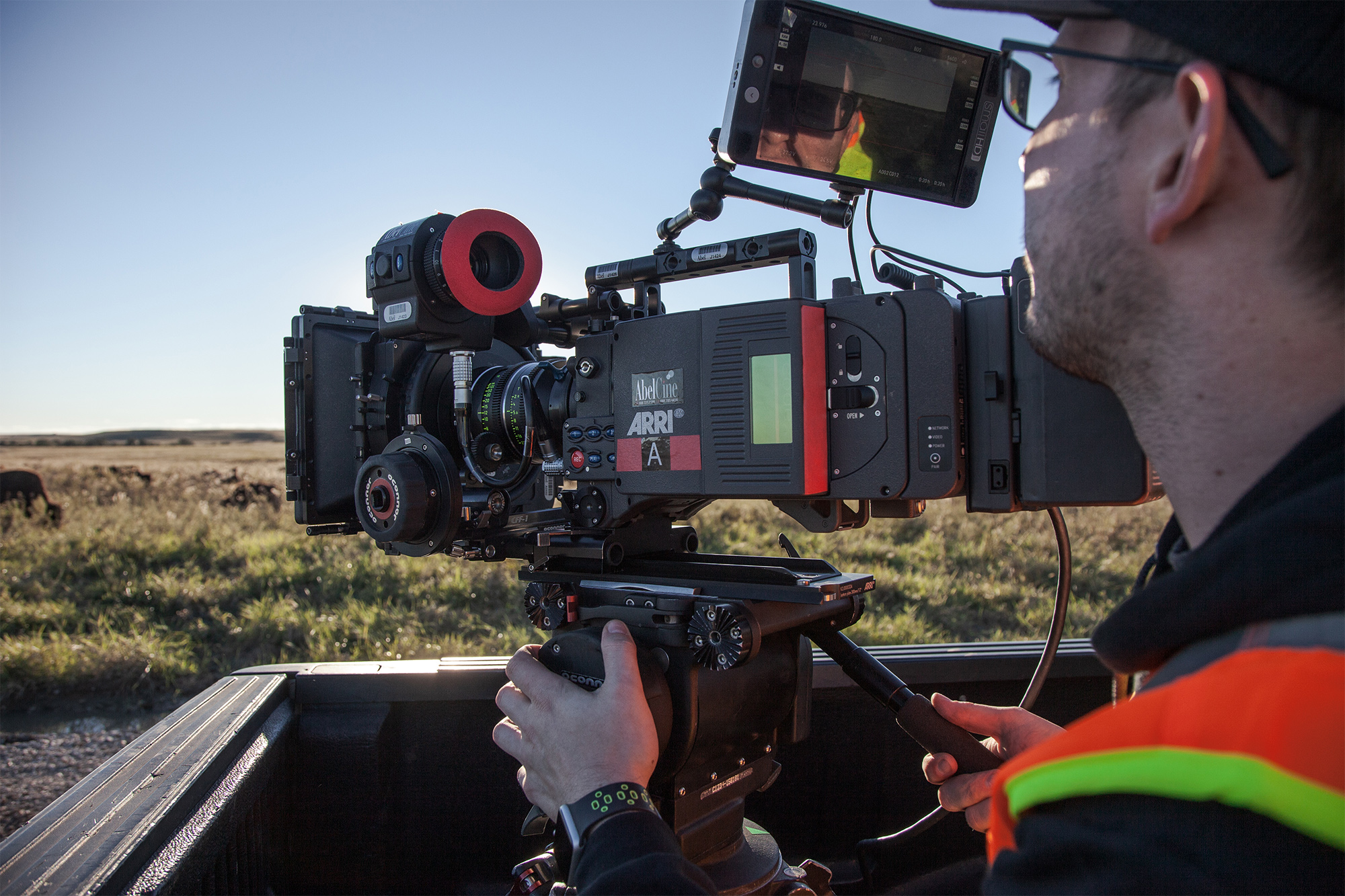
How did you get involved with Grobb?
Early in 2018, RiTE launched an experimental extended reality (XR) project I worked on with action designer and director, Ryan Monolopolus. The achieved goal was to connect our motion control system to a real-time 3D rendering platform and project scene elements onto a stage, essentially consolidating the entire CG postproduction workflow and capturing straight into the camera. Months later, Ryan cued me in on an alien/action/sci-fi project he was developing with RiTE Studios called Grobb. I’m a sucker for sci-fi, so I signed on as DP and recruited Justin Dombrowski as my second unit DP.
Did you always want to shoot in large format, and what led you to select the ALEXA LF as your camera of choice?
We spent a couple of weeks weighing our camera and lens options against the look we were going for. At first, Ryan thought anamorphic was essential for the sci-fi look, but we later determined he really just liked the flares, and hated the bokeh shape and the focus breathing. I convinced him to give up the flares in exchange for several other factors he found more desirable and essential to the overall look he was going for.
We knew that a standard 35mm-sized sensor wasn’t going to give us the grand perspective we were after. I dug into the large format research and found there were are few options to pick from: there was the new Sony VENICE, the RED MONSTRO, and of course, the mythical ALEXA 65.
I landed on the ALEXA LF as my final choice for camera body. In a nutshell, although historically I’ve been a die-hard RED user, with all of the complicated factors going on with this project, I opted for the simplicity and reliability of the ALEXA platform, which has grown on me over the years of dealing with larger productions. I have always looked at the RED as half camera and half computer, which is perfect for me as a cinematographer, tinkerer and computer geek. I see the ALEXA platform as more of a pure camera system, hiding its computer guts deep down, and staying as true as possible to its roots in film-based cinema cameras.
What types of locations and lighting situations did you encounter on the project?
We were slated to have a few days of “scouting” when we arrived in Pawhuska, Oklahoma. Everyone called it a scout, but I knew that it really meant getting all of the landscape shots out of the way before the bulk of the crew arrived days later. We slimmed down one of the packages as small as possible so that we could carry it on the plane. We got our support gear locally: OConnor 2575D Fluid Head, Ronford-Baker sticks, Fisher 10 Dolly. As soon as we got off the plane, we jumped into an SUV and headed to the Tall Grass Prairie, just in time for an epic magic hour.
Tell us about the recording modes you used with the LF. I presume you used the “full frame” (aka full format) recording mode? Did you use any other sensor resolutions? And, did you shoot in ARRIRAW or ProRes?
We shot everything in ARRIRAW Open Gate with guides for our final 2.39 delivery. I was able to play footage back on my 2015 MacBook Pro from the Codex reader in Resolve at a surprisingly decent frame rate. This was important to do the first day out in Pawhuska because I needed to get a feel for how the footage graded, and I wanted to see how far I could push the highlight and shadows in either direction. Thanks to the speed of the media, I was able to determine the sweet spot on the sensor pretty quickly, which in-turn, guided me through exposing the rest of the project. I carry a Spectra light meter but found myself almost exclusively using the false color view towards the end of the shoot. I also carry a director’s viewfinder; however, I didn’t want to have to do the math on the frame size conversion every time, so I used the legacy Artemis Director’s Viewfinder on my iPhone, which proved essential to landing that heavy package in the exact point in space with the exact framing every time.
Overall, I have to say that the footage is an absolute dream to grade in ARRIRAW. There is virtually no artifacting, even under extremely detailed scene conditions like grassy fields, a torture test for most sensors and storage systems. When we went to our final color session, our colorist was able to pull out all kinds of secondary power-windows from shades of very specific colors with virtually no matte chatter. I could tell he was having fun taking the LF footage for a test drive.
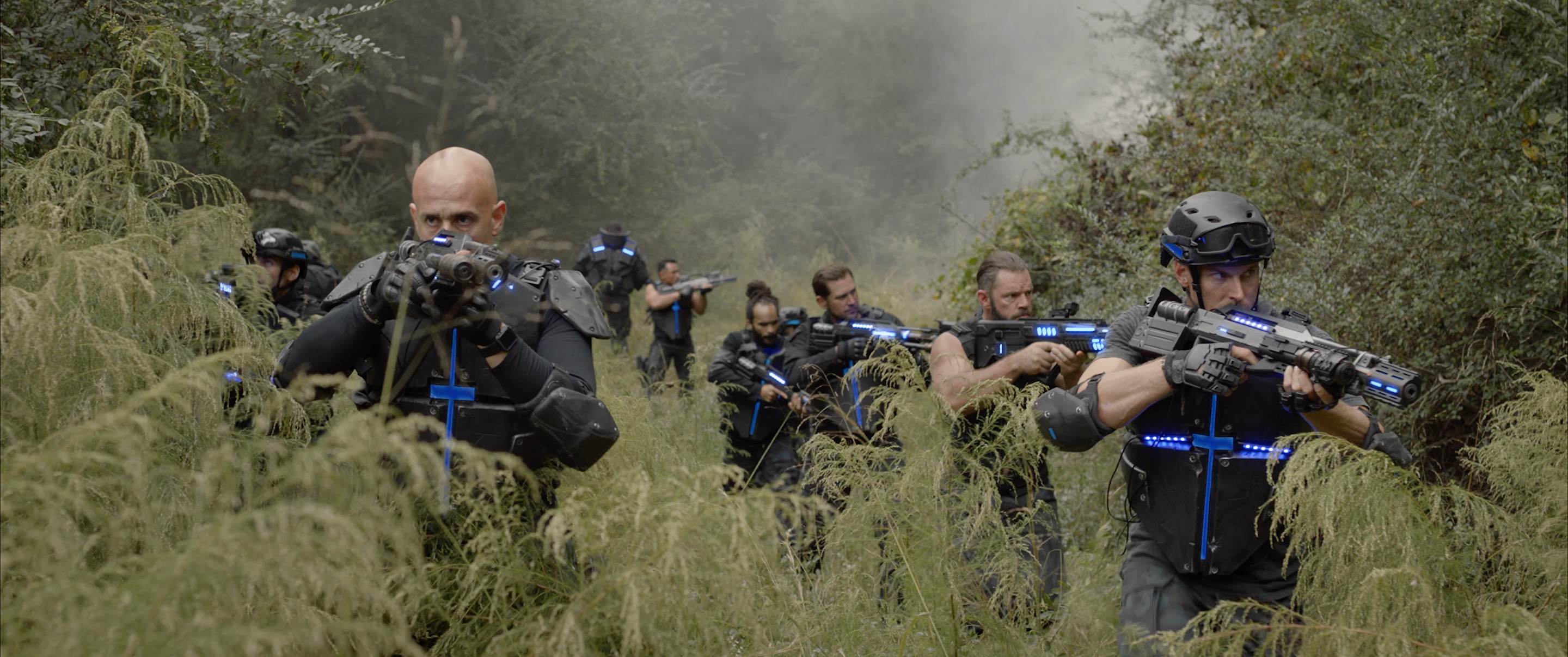
Did you encounter any challenges in using the camera? How did you choose to power it?
I was delightedly surprised by the battery life from the Hawk-Woods 24V bricks provided by AbelCine. We assumed we would be burning through batteries like twigs on a bonfire, so we always plugged into an Anton Bauer CINE VCLX when we were stationary. However, we found that the LF was highly efficient, especially if you go into the menu settings and turn off the wireless video and FIZ when it’s not needed.
What were your impressions of the Leica Thalia lenses? What led you to select them for this project, and how did you find they performed?
I was particularly drawn to the Leica Thalia primes for not only being very sharp and crisp, but also the bit of vintage character they have to them. The contrast fall off is very smooth in the low end but doesn’t seem to flatten out completely, even when the sun is beaming down the lens. Skin tones seem to magically come though smoother through these lenses than in real life. Also, since the Thaliasʼ image circle is so large, we would essentially only be using the absolute best parts of the glass. Any barrel distortion that would otherwise be noticeable on the outer edges of the wider lenses simply would not be much of an issue. I knew we would be shooting many landscapes under natural light across the entire gamut of day and night, lots portraits of people, and a lot of scenes requiring post effects. From what I had seen in the lab tests and the test footage I had gathered, I knew these lenses were perfect for Grobb.
The biggest test for the glass was a night-time bonfire scene. The Thalias were able to render skin tones, shadow details, and large bright flames all in the same frame with great detail, and with just the right amount of fire-swirl-flare and halation. We supplemented the natural light of the fire using several SkyPanels running the fire simulation preset, controlled remotely via Luminare DMX app on an iPad.
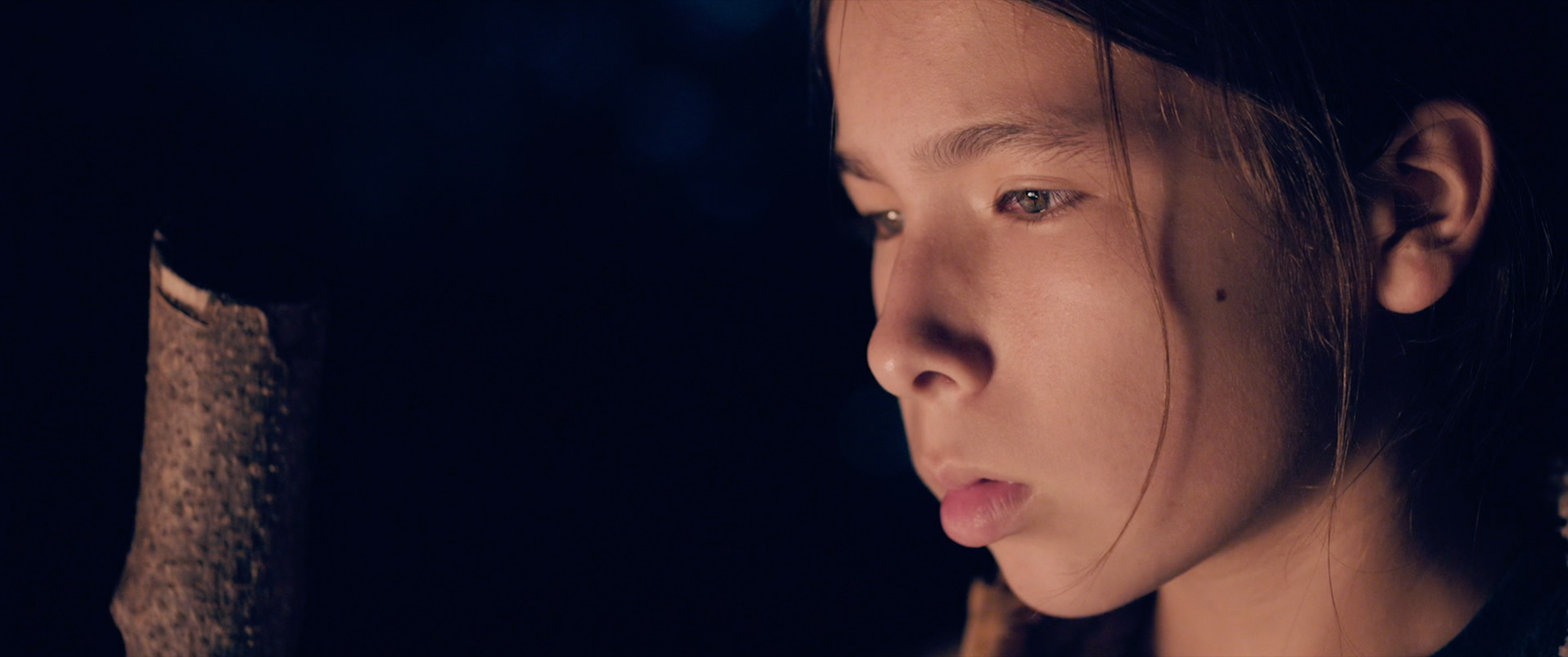
How did you find working with AbelCine on this project?
I love AbelCine. I had the opportunity to visit when I did Phantom Tech training in NYC. Great people, great knowledge, and know-how. There’s certain things that you can only get at AbelCine, and I’m sure it has to do with the manufacturers entrusting the right people with their most highly treasured creations. Abel is truly a haven of top-notch gear-heads and solutions!
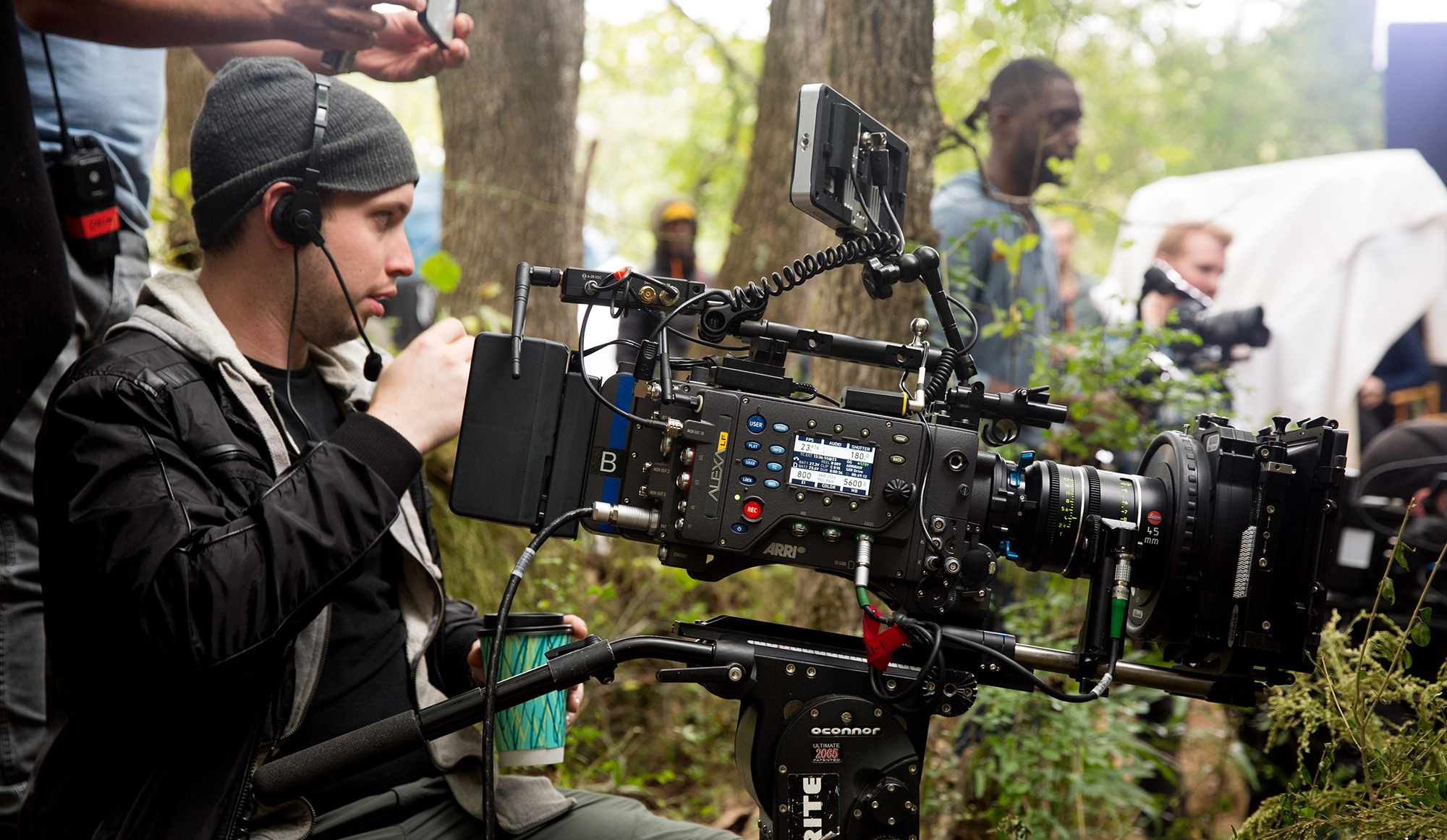
Any final thoughts on what you’d tell a DP who wanted to use the ALEXA LF and Leica Thalias on their next project?
I would totally recommend the LF and Thalias to fellow DPs. It’s a great package overall; it offers a unique look, and that enlarged perspective that we all love. I’d say if you are going for a look that really stands out as being “bigger,” then this is an optimal place to start.
Responses have been lightly edited for space and clarity. All photos courtesy of Colin Quinn, Justin Dombrowski, and RiTE Media.
About RiTE Media
RiTE was founded on the core belief that, as artists, we have a responsibility to advance culture; to inspire the pursuit of the unseen through authentic creative expression. It’s this thirst for exploring “what’s next” that informs every decision we make.
In the summer of 2010, Paris Schulman transitioned his Atlanta-based music production company into managing artists, producing original music videos and unique multimedia content. In 2014, Paris’ long-time friend and collaborator, Mikey Cosentino, came on board as RiTE’s Chairman to help further their shared vision; telling unique, compelling stories utilizing the world’s most leading-edge technologies.
Five years later, through the power of team synergy, RiTE has undergone a rapid ascension in all areas of filmmaking and music. From humble beginnings to acclaimed success, RiTE will continue to push the boundaries of art, technology and business while nurturing a true content-creating hub in Georgia and beyond. To learn more, visit ritemediagroup.com.
About Colin Quinn
Armed with an incredible mind capable of creating the impossible, Colin is a formidable force as a Creative Director, Robot and Phantom Technician, Editor and Inventor. Colin has always been a big dreamer and his constant curiosity feeds his inner-child and has modeled him into the extraordinary man that is presented today; forever exploring, evolving and pushing the boundaries of cinema. To see more of his work, follow him at @colinmichaelquinn on Instagram.















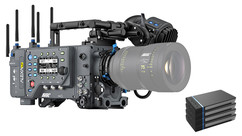

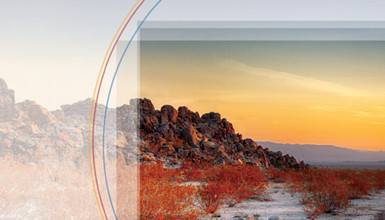

AbelCine encourages comments on our blog posts, as long as they are relevant and respectful in tone. To further professional dialog, we strongly encourage the use of real names. We reserve the right to remove any comments that violate our comment policy.
AbelCine publishes this blog as a free educational resource, and anyone may read the discussions posted here. However, if you want to join the conversation, please log in or register on our site.
We use Disqus to manage comments on this blog. If you already have a Disqus account registered under the same email as your AbelCine account, you will automatically be logged in when you sign in to our site. If not, please create a free account with Disqus using the same email as your AbelCine account.